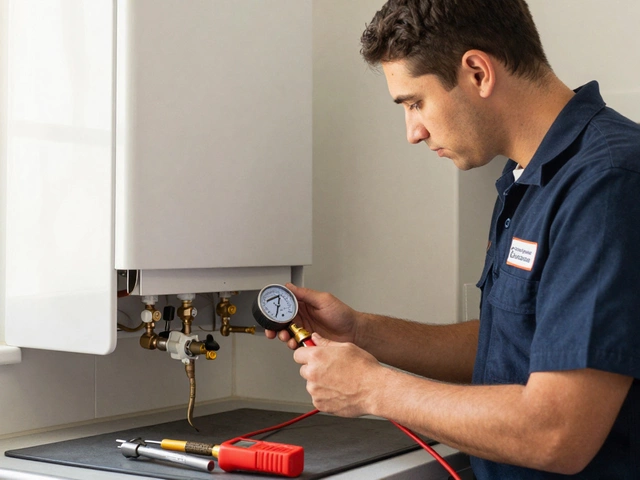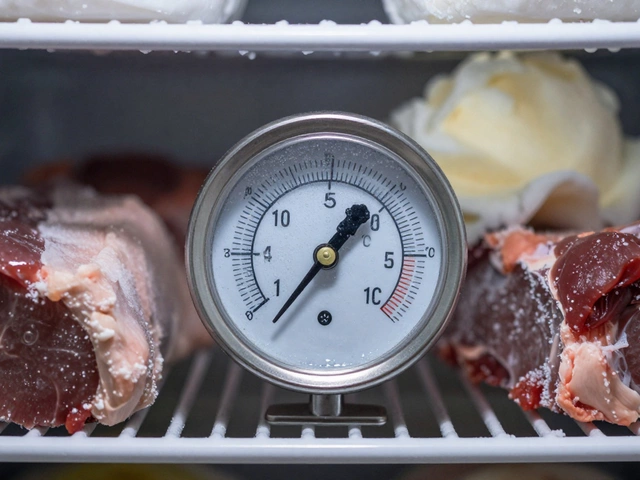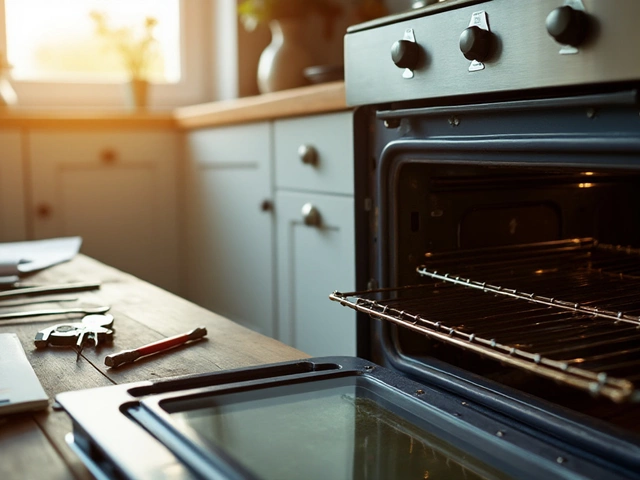Ever tried describing your coffee maker to a repair guy over the phone? Sounds easy until he asks, "Is it a drip or single-serve?" and suddenly your mind’s blank. Appliances are everywhere—fridges humming in the kitchen, washers spinning in the garage, that mysterious box in the basement that sometimes roars to life and makes Max bark. But actually saying what an appliance is, what it does, or which model it is can get tricky fast. If you’ve ever been stuck in one of those home repair chats, you know what I mean. Getting the details right when you talk about your appliances isn’t just about finding them in a catalog or on Amazon; it can help you get the best use out of them, fix them faster, and maybe even avoid the dreaded family debate over "Is the dishwasher on or broken this time?"
What Exactly Is an Appliance?
The word "appliance" gets thrown around pretty loosely. From the ancient hand-cranked egg beater your grandma used, to the silent, touchscreen wonders that can be operated from your phone—if it makes life easier, it’s probably considered an appliance. Most people think about appliances as things that use electricity, gas, or water to do useful stuff in the house. But technically, even non-electric devices like manual egg beaters or fruit presses used to fit the bill, especially in the early 1900s when "appliance" meant any useful household device. Today, we mostly mean powered gadgets: fridges, stoves, microwaves, washing machines, and more.
Modern appliances tend to come in two flavors. Major appliances (usually called "white goods") are things like your refrigerator, washing machine, dryer, oven, and dishwasher—they’re the heavy lifters. Then you have small appliances, like toasters, blenders, air fryers, coffee makers, and food processors. Why this matters: if you’re telling someone which appliance you’re talking about, saying "the big white box in the kitchen" isn’t enough. Is it a fridge or a chest freezer? Their roles are totally different, and describing them clearly saves lots of headaches.
Appliances are differentiated not just by their use and size, but by things like power source (electric, gas, both), and how they’re installed. Some are built-in (think your wall oven), some are freestanding (the fridge most folks shove into a kitchen nook), and others are portable (Max’s pet fountain counts, right?). A clear appliance description always answers three questions: what is it, what does it do, and how does it work? Describe the shape, the basic operation (does it heat, cool, clean, or mix?), and say if it plugs in, needs plumbing, or just runs on batteries.
Just for fun: did you know the earliest commercial electric toaster, the "Eclipse," popped up in 1893, but you had to manually turn the bread? Automated pop-up toasters didn’t arrive until the 1920s. Fun trivia, but also a reminder—appliances evolve, so that old blender from 1972 works nothing like today’s high-speed ones, and describing which one you mean gets super important when you need a part (or a safety warning).
Key Features to Include in an Appliance Description
Alright, so let’s say you actually want to describe your washing machine for a service tech—or maybe you’re selling a used microwave and want buyers to know what they’re getting. Here’s what matters most in a good appliance description:
- Type & Purpose: Is it a front-load washer? A convection microwave? The basic job should lead the way.
- Brand and Model: This isn’t just corporate fluff. Different models may look the same, but operate totally differently.
- Power Source: Is it electric, gas, both, or battery-operated (like a robotic vacuum)? Don’t skip this one—wrong info can result in big headaches.
- Key Features: Does the fridge make ice? Is the oven self-cleaning? Does the toaster have a bagel setting? Focus on what stands out, especially things you use often.
- Size and Capacity: This isn’t just about physical size. Washing machines, fridges, and microwaves are often described in liters, kilograms, or cubic feet. Check the plate inside the door or at the back for this info.
- Appearance and Color: Yep, color matters! If you’ve ever tried matching a "stainless steel" finish with a "brushed silver," you know details count.
- Age (Approximate Production Year): Old doesn’t always mean broken, but parts can vary with even one year’s difference.
- Energy Efficiency: Star labels, wattage, and energy usage say a lot about utility costs or environmental friendliness. Check for those stickers—they’re not just for show.
- Special Tech: If it’s got WiFi, smart controls, or even a quirky safety quirk (like a magnetic child lock), say so.
Still not sure? Imagine if Piper, my daughter, wanted to explain her favorite slushie maker to a friend. She’d say, "It’s bright blue, about the size of a football, makes slushies super fast, and plugs into the wall next to the toaster." That’s already a way better start than "It’s a thing that makes cold drinks." Same goes for adult toys—I mean appliances. (You know what I mean.)
Here’s a handy table of common appliance features you’ll see in product descriptions:
| Appliance Type | Key Features to Describe | Measurement Units | Common Power Source |
|---|---|---|---|
| Washing Machine | Front/top-load, cycles, spin speed | kg (load), rpm (spin) | Electric |
| Fridge | No-frost, number of doors, freezer location | L (volume), size (HxWxD) | Electric |
| Oven | Convection, self-clean, number of burners | L (volume), W (power) | Electric/Gas |
| Dishwasher | Program cycles, noise level | dB (noise), place settings | Electric |
| Microwave | Wattage, turntable, grill function | W (power), L (volume) | Electric |
Real-life appliances almost never fit neatly into the visible feature list. For example, that "silent" dishwasher you bought because the salesperson swore you’d never hear it? If it’s noisy, mention that in your description. And yes, things like damaged handles, cracked drawers, or even strange smells become relevant details, especially for repairs or resale.

Why Accurate Descriptions Matter (And Where People Goof Up)
You’d be surprised how many times people call in for service and can’t even say what kind of fridge they have, much less the exact model. You don’t have to memorize a serial number, but snapping a picture of your appliance label and stashing it in your phone’s photo album? Best move ever. I’ve used this trick countless times when Max is underfoot and Piper wants pizza at the same time the oven’s gone rogue. Trust me, a 10-digit model number beats "it’s white and hums weird" every time.
Mix-ups happen most often with things like ovens (gas or electric? convection or not?), washing machines (front loader or top loader?), and cooktops (induction, ceramic, or gas?). Even fancy fridges can hide features in plain sight—some have hidden water filters or ice makers that look the same on the outside. Descriptions help with:
- Scheduling the right repair (no one wants a gas fitter showing up for an electric issue)
- Ordering correct parts (filters, bulbs, knobs—all model-specific)
- Making insurance claims or registering for warranty
- Estimating power usage and saving money on bills
- Avoiding arguments at home—“It’s the big silver box!” isn’t helpful if three other silver boxes live in your kitchen
Funny enough, “smart” appliances often have the dumbest problems. My own fancy touch-screen fridge once needed a software update—seriously, a fridge with a firmware issue! Describing it as "the double-door LG with WiFi, bought in 2021, bottom freezer, 30 cubic feet, silver" made it way easier for the repair guy to know what to expect. Compare that to my neighbor’s “the old fridge in the shed that sometimes leaks”—guess which one got fixed faster?
The biggest places people fudge up: leaving out brand, using the wrong type name (calling a convection oven a microwave), and skipping over size. Oh, and not mentioning whether an appliance is built-in, which often heads off complicated repair nightmares.
A quick tip for anyone who keeps appliance boxes (or manuals) in a basement storage: stash a folder with receipts, model numbers, and basic specs somewhere accessible. Or just open your phone camera and snap those info panels as soon as you install anything new.
Clear, Useful Examples of How to Describe Any Appliance
Still not sure how to put it all together? Here are some real descriptions you could use (or adapt) for your own needs:
- Fridge Example: “LG French-door refrigerator, model LFXS26596S, purchased 2022. Stainless steel, 36 inches wide, 27 cubic feet, bottom freezer, automatic ice maker, WiFi-enabled, clear shelves. Very quiet except when making ice. Measures 69"H x 36"W x 30"D.”
- Washing Machine Example: “Bosch front-loading washing machine, model WAN28202GB, installed fall 2021. White finish, 8 kg load, 1400 rpm max spin speed, energy rating A+++, digital display, quick wash (15 min), direct drive, freestanding, water inlet on left rear. Slight rattle during fast spin.”
- Oven Example: “Samsung slide-in electric range, model NE58F9710WS, bought 2020. Black stainless, 30-inch wide, glass-ceramic cooktop with convection oven, 5 burners, air fry mode, touch screen, Sabbath Mode, self-cleaning, requires 220V connection.”
- Microwave Example: “Panasonic countertop microwave, model NN-SN686S, 1200W, 1.2 cubic ft, stainless finish, inverter technology, turntable, popcorn and sensor cook settings, installed 2019. Still runs quietly, easy-clean interior.”
- Portable Appliance Example: “Ninja Professional blender, model BL610, bought in 2023. 1000 watts, crushes ice, BPA-free 72 oz pitcher, 3 speeds, paid extra for warranty. Used daily for smoothies, all buttons and seals intact.”
The golden rule? Keep it clear, stick to real facts, and don’t be afraid to pull out a measuring tape or lift that info panel for a peek. Say you’re describing to someone who’s never seen it—if Piper’s friends can picture her slushie maker and Max can avoid barking at the wrong appliance repair guy, you’ve nailed it. The more specific and concrete, the faster you’ll get results—whether you’re replacing, repairing, or just showing off to houseguests. And hey, maybe next time that oven misbehaves, you’ll know exactly what to say instead of pantomiming “oven weirdness” over the phone. That’s my kind of kitchen win.





